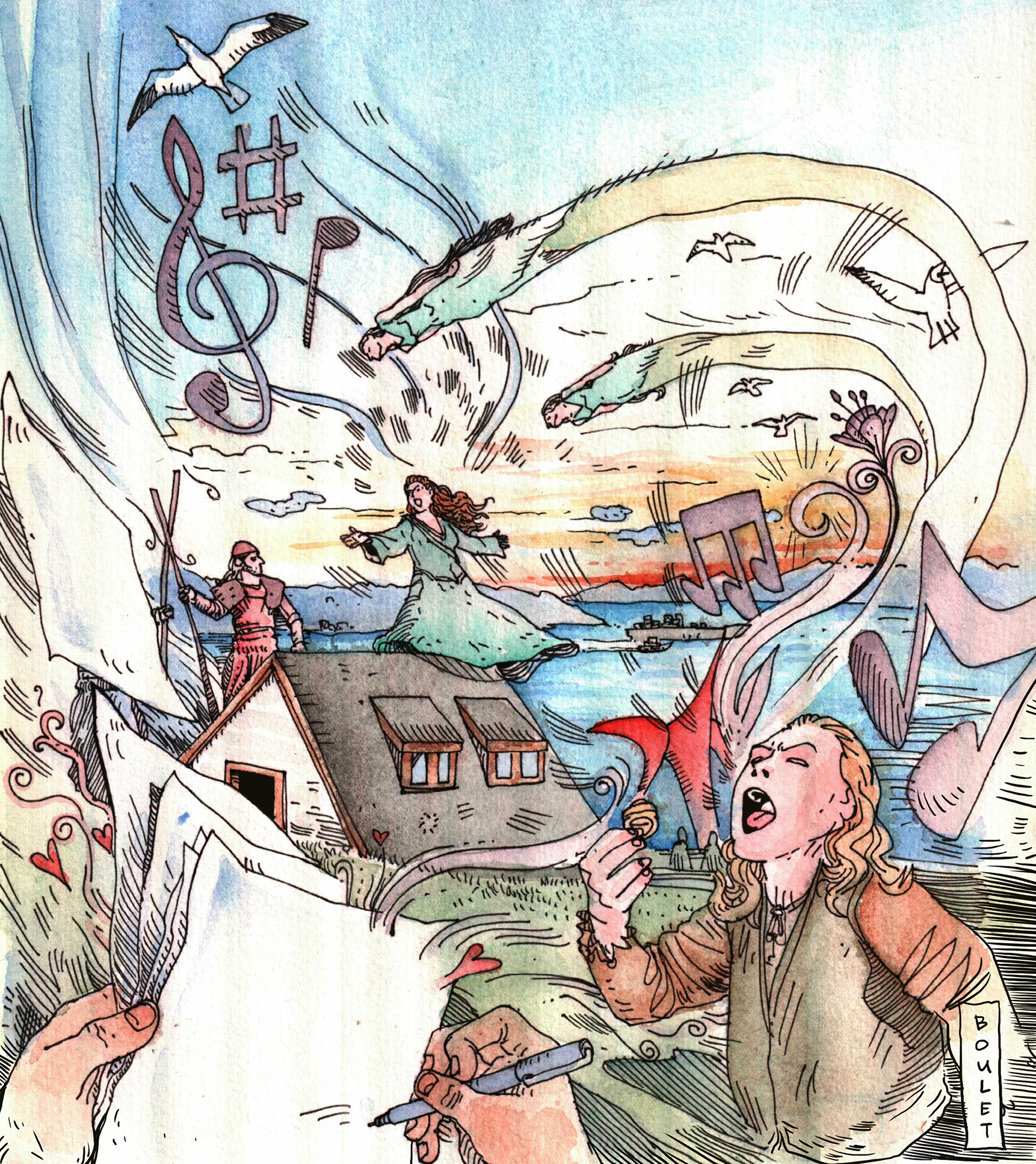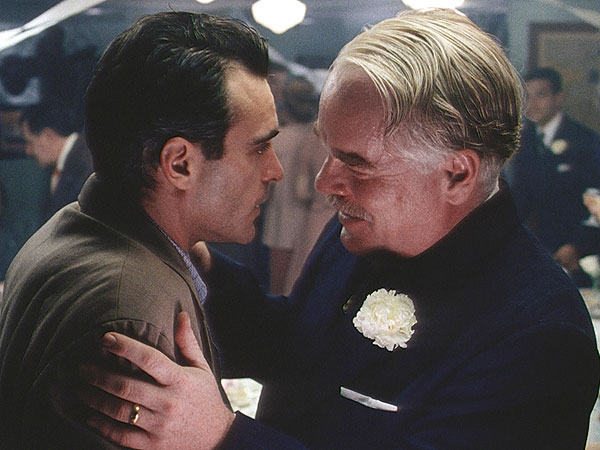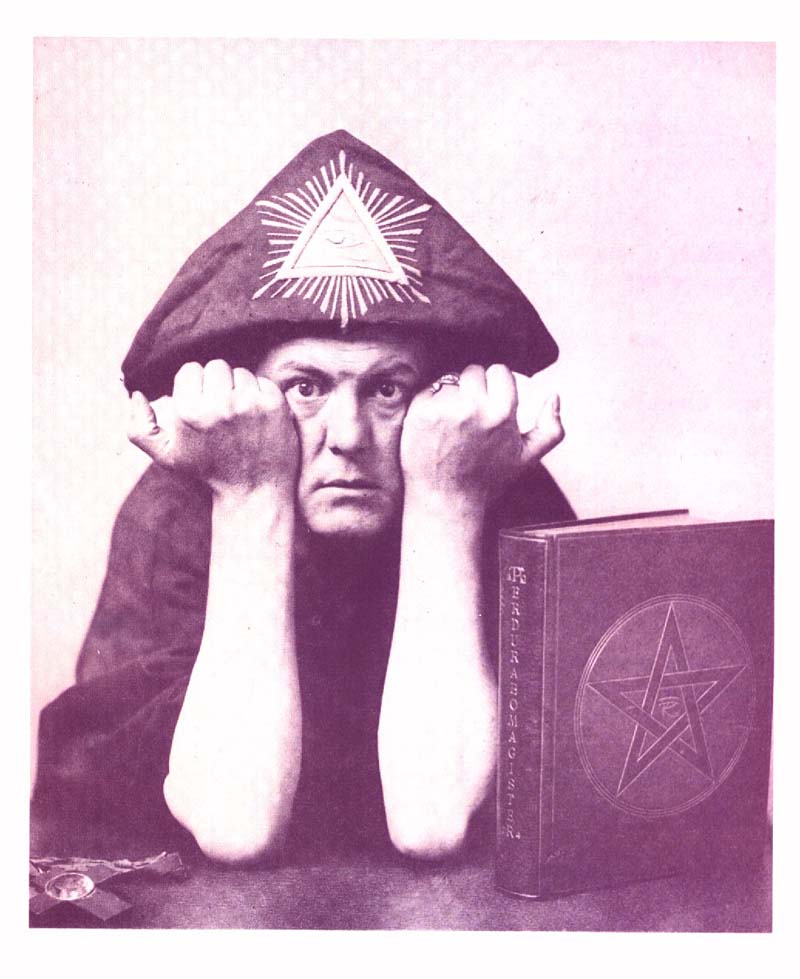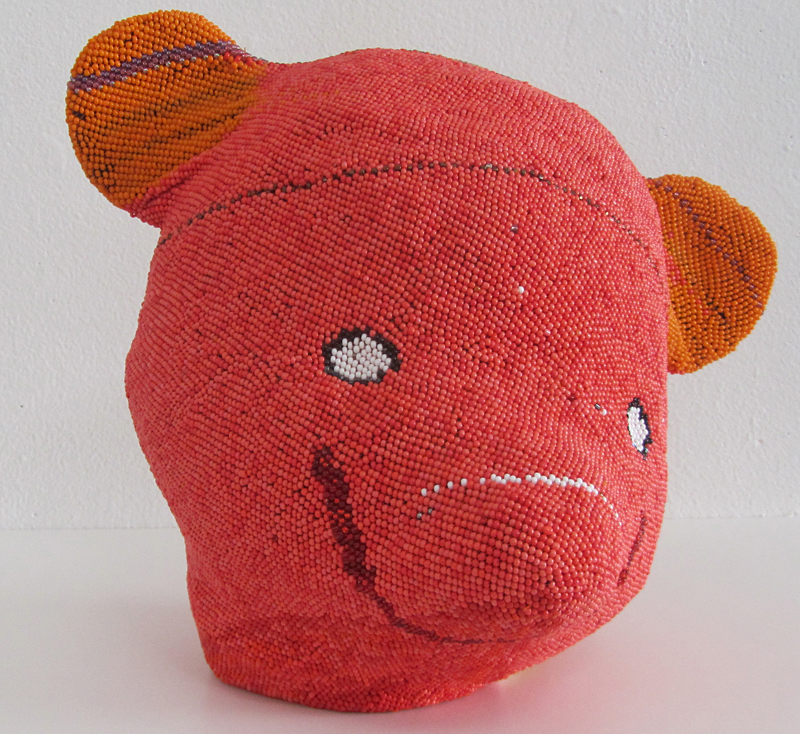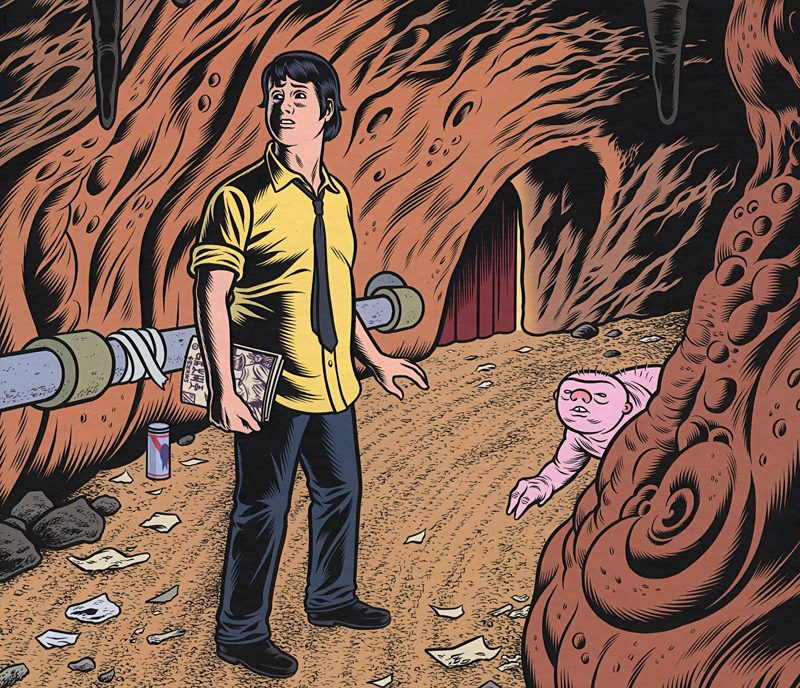STAGE
Directed by Steve Tomkins, Les Miserables at the Village Theatre is to the musical what a bonsai tree or a miniature pony is to nature lovers. It’s a snow-globe miracle to take Victor Hugo’s outsized epic and deliver all its legendary punch, passion, and pageantry on a small-enough scale to see each performer’s face and actually hear each soloist belt to the rafters. (Continues in Issaquah through Jan. 5; plays in Everett Jan. 10–Feb. 2). Kevin Phinney
Hannah Mootz in Bo-Nita. How could a chatty one-woman show in which a 13-year-old girl tells her life story go off the rails? Let me count the ways. No, actually, there’s no need. With Mootz playing multiple roles (including Bo-Nita, her addict mother Mona, and five saggy pillars of their community), I was counting nothing but my blessings to see this all-in talent bloom in Seattle Rep’s October production of Elizabeth Heffron’s new play. Margaret Friedman
August: Osage County won playwright Tracy Letts a Tony and a Pulitzer in 2008, and Balagan’s April production made it clear why. His dramedy runs a gauntlet of emotions when an Oklahoma patriarch disappears and his clan must gather to sort out the mess. It’s a sad, funny, horrific tale, told with compassion and a ferocious commitment to honesty by director Shawn Belyea, with a cast as fine as has ever trod a Seattle stage. (The movie adaption opens Jan. 10, with Meryl Streep as the pill-popping matriarch/harridan Violet.) KP
Andrew D. Smith’s lighting design for Azeotrope’s fall staging of 25 Saints made it possible to endure being cooped up in a tiny cabin full of meth dealers, the setting sallower than a tweaker’s eye socket. But on the few excursions from the main set, into the aisle and up to a balcony, Smith doled out to these drug captives glimpses of a purer state—diamond-white moonlight perforating branches. It was wholly holy. MF
Back in March, reWilding was The Satori Group’s rumination on what theater could or ought to be in 2013. Martyna Majok’s play, staged in a mossy-floored forest glade built inside the Inscape Building, throws convention to the wind. You couldn’t miss the fresh-as-pine-needles scent from this meandering fable of strangers abandoning civilization to reboot their lives in a remote forest enclave. (Caitlin Sullivan directed the dystopic production.) KP
For Seattle Shakespeare Company’s October production of Much Ado About Nothing, Craig Wollam’s set for 1953 Messina was like a mini-golf course, built to maximize and diversify dramatic action within a small space. Canal, pool, harbor, rampart, and tawny stone esplanade were ingeniously interlocked. Each element obeyed Chekhov’s gun principle—if something is seen, it must be used (to highly comic effect, in this case). MF
The costumes by Harmony Arnold were a highlight of Intiman’s Lysistrata this summer. Set during a khaki modern war, the palette of the play-within-a-play really popped. Somewhere between garishly glam Strictly Ballroom and a frumpy Muppet Show, the actresses wore jewel-tone exercise outfits, futuristic tribal headdresses and bodices, and some of the funniest penile prostheses ever concockted (sorry!). They threatened to steal the show from the grim realities of combat. MF
You’ve got to be pretty deep in a hole of depravity for blackface to make sense, but that’s just where New Century Theater Company took us in its October production of Enda Walsh’s bizarre drama The Walworth Farce. In the tiny New City Theater space, director John Kazanjian created multiple frames for the play-within-a-play being enacted by demented father Dinny (Peter Crook) and his adult sons (Darragh Kennan and Peter Dylan O’Connor). It was a horrifying look at the roles we all play and whom we play them for. Mark Baumgarten
From London streets to Dartmoor’s heaths and hearths, a gargantuan percentage of the Rep’s elaborate Hound of the Baskervilles experience was created by one very talented man: lighting designer L.B. Morse. He conjured landscapes, fine architecture, and saturated images associated with psychological trauma (including the titular beast). The November show had a swirling, thrilling miasma of place; the lights seemed more tangible than the solid set (which, by the way, Morse also designed). MF
CLASSICAL
One aspect of Gerard Schwarz’s tenure with the Seattle Symphony that I’m glad to see continue under Ludovic Morlot is a taste for spectacle. Three of this year’s most memorable and talked-about concerts featured epic modern masterworks—two proven, one new: Messiaen’s lurid Turangal
i
la in January and Britten’s powerfully moving War Requiem and John Luther Adams’ elemental Become Ocean, both in June. A lot of ideas are bandied about these days for solving the classical biz’s money worries, and though I’m all for smaller, more flexible ensembles and concerts in less-formal spaces, these SSO blockbusters reminded us that some amazing things can happen only by gathering hundreds of musicians in a traditional venue. Gavin Borchert
The track of the year for me comes from roots vocalist Tift Merritt’s collaboration with pianist Simone Dinnerstein on Night, a CD that combines Schubert, Purcell, and Leonard Cohen and takes “crossover” to the next level. Their version of Schubert’s lied “Nacht und Traume” adds a hint of honky-tonk confessional blues; it sounds insane on paper, but turned out heartstoppingly beautiful—especially hearing the two do it live at the Triple Door in April. GB
Given Shostakovich’s popularity in Seattle, you wonder why no one else had taken on his cycle of 15 wrenching and intimate string quartets—but with last weekend’s performance of the Eighth, Trio Pardalote is now halfway through its ambitious project. Doing one roughly every other month, they’re due to wrap up sometime in 2015. Joining these quartets with other juicy repertory (Mendelssohn’s Octet, Bach’s “Goldberg” Variations), the Trio’s put together Seattle’s most interesting chamber-music series (made even more intriguing when they play in West Seattle’s homey, kitschy Kenyon Hall; it’s a weird juxtaposition, like hearing Art Linkletter read The Gulag Archipelago). GB
Seattle Opera’s August staging of Wagner’s Ring—the last in the tenure of general director Speight Jenkins—was the best yet of the company’s signature undertaking. Some aspects were familiar from past productions—like Thomas Lynch’s verdantly Northwesty sets and returning cast members like Greer Grimsley (Wotan), Stephanie Blythe (Fricka), and Richard Paul Fink (Alberich). Others were new—like tenor Stefan Vinke, heroically tireless as Siegfried. But it all combusted like never before. If SO’s new head honcho Aidan Lang decides to take future Rings in a different direction, this performance will stand as a fitting climax to the production. GB
DANCE
Of all the versions of Le Sacre du Printemps (aka The Rite of Spring) I saw during its centennial year, January’s production by Compagnie Marie Chouinard at Meany Hall was the best evocation of the spirit of that scandalous Stravinsky premiere. Chouinard gets the powerful energy and obsessive approach of Nijinsky’s original without needing to recreate his folk tale. Sandra Kurtz
During April’s SCUBA mixed-bill program at Velocity, a new work by Maureen Whiting, About a Tree, was particularly beautiful and eccentric, incorporating a large branch from a madrona tree and making a ritual you’re convinced you remember from a dream. Alas, she’s moving to the Bay Area—to work with other trees, perhaps? SK
With their company zoe|juniper, Zoe Scofield and Juniper Shuey are very slowly building a new project, showing aspects of it in different venues. They were in residence at the Frye earlier in the year, and gave a more traditional “performance” at Velocity in May—if you think laying on your back hoping that dancers won’t jump on you as they swoop by is “traditional.” SK
The New Animals gave two memorable performanes at Inscape this fall. This emerging group of mostly Cornish grads, led by Markeith Wiley, combines break dance, contact improvisation, contemporary dance, and everything else from their polyglot education. They’re very bold movers, and TRE, a salute to a murdered colleague, was exhilarating and contemplative all at once. SK
Last month at On the Boards, Cedric Andrieux was probably the best thing I saw all fall. Choreographer Jerome Bel had the dancer Andrieux tell very deadpan stories about his career in a sort of third-person autobiography. He also demonstrated some of his repertory (Merce Cunningham and Trisha Brown included). Andrieux’s distinctive English-as-a-second-language shifts in inflection and vocabulary, and his insider comments about performing masterworks of postmodern dance, were riveting. SK
VISUAL ARTS
Inaugurating the new year, MOHAI reopened in South Lake Union with much fanfare. The old armory has been handsomely renovated, there’s a nice new cafe, but most of the museum’s musty old holdings—as at the old Montlake location—are generally suited to school field trips. What I really like, however, is John Grade’s Wawona, a gently swaying 65-foot tower salvaged from the old ship of the same name. The Douglas fir timbers creak and move to the touch, like a tree shifting in the wind. Brian Miller
By now, Stacey Rozich’s fantastical creature-filled paintings should be known by most Seattelites. After working on Fleet Foxes music videos, EMP promos, and Capitol Hill Block Party signage, she’s been everywhere. But her May show at at Roq La Rue was the first time she attempted to create a narrative through her work. Within Without Me depicted an incredibly vivid world of masked children and paganesque nature gods, telling an allegorical tale of natural destruction and redemption. It was a joy to get lost in it. Kelton Sears
The Frye gave local artist Buster Simpson his first major retrospective over the summer, with over 50 works—mostly sculptural—that are both sourced from and speaking to the local environment. His assemblages are made of old saw blades, snow shovels, metal fenceposts, teakettles, bits of tin and other scrap metal, beer bottles, TV tubes, his own 60-year-old Boy Scout hatchet, and much reclaimed wood. Simpson’s constant salvaging is an explicit rebuttal to what he calls “our planet’s thirst for consumption.” He’s a zero-sum artist who rearranges things without substantially adding to or subtracting from the ecosystem. BRM
For this summer’s temporary installation at Olympic Sculpture Park, SAM scored a winner by commissioning Heather Hart’s The Western Oracle: We Will Tear the Roof Off the Mother. She built a half-submerged house in the soil, allowing visitors to clamber on and over the roof—as they did all summer. The Western Oracle proved wildly popular, the site of a thousand selfies, inviting to children and art snobs alike. It will be hard to top next year, but I think Hart has proven that interactive, touchable art is what people crave in an outdoor setting. BRM
BAM scored a coup this spring with the traveling show Zoom: Italian Design and the Photography of Aldo and Marirosa Ballo. The show included some 300 images from the Ballos, plus some of the products, posters, magazines, and other objects of their booming postwar era. The dominant aesthetic isn’t exactly mid-century modernism but something closer to a sleek, space-age futurism. The gadgets are electric, not electronic. There’s a fundamental optimism to each new product line, each new sales year. And, oh, those manual typewriters. Bellissima! BRM
Just removed from Suyama Space, Drawn From the Olympics consisted of 900 pounds of black craft paper that visiting artists Stephen Nguyen and Wade Kavanaugh twisted and kneaded and shaped into into a knotty, undulating mass of strands. Their reference point was the rainforest of our Olympic Peninsula, whence paper products are still extracted from wood pulp. Their paper strands reached to the rafters and crept across the floors like charred tentacles. Now that it’s gone, I suppose the whole piece has been recycled—perhaps into a phone book, a cereal box, or a newspaper. BRM
ABOVE & BEYOND
There is absolutely nothing more wonderful than stepping into a packed three-story building and getting lost in a hive of Northwest underground comix and zine artists, all buzzing with their drippy, surreal stuff. Organized by Janice Headley, Eroyn Franklin, and Kelly Froh, last month’s Short Run Small Press Festival at Washington Hall overwhelmed me with good vibes and good comics. The annual gathering allows you to meet some of the real, true-blue weirdos who are making some of the region’s most exciting, bizarre stuff. KS
Fetish Night at C.C. Attle’s transforms the first Saturday of the month into a full moon for kinksters of all persuasions—from drag queens and leather-clad bondage lovers to handlers and their human puppies. You’ll find flogging enthusiasts and furries, too. Strong drink is served. A strong constitution is your responsibility, but highly recommended. Call it participatory theater if you like. KP
Loosely concerning the interaction between humans and animals, Strange Creatures offered a charming collection of local independent animation from S.E.A.T. (the Seattle Experimental Animation Team) at Northwest Film Forum in August. Watching hilarious shorts about beer-guzzling and weed-smoking (drawn frame by frame by Clyde Petersen), Tess Martin’s marker-on-glass animation about cats, and Drew Christie’s tradigitally animated philosophical dialogues between humans and whales made me swell with pride about the state of Seattle animation. KS
Arrington De Dionyso is the sort of person you couldn’t make up. The Olympia artist and musician creates “trance punk,” a schizophrenic mishmash of rock and world music that features his otherworldly throat-singing skills. De Dionyso’s Songs of Psychic Fire lecture/demonstration at the Henry this June was a fascinating examination of the “utopic visions” he reaches during performance, a glance into the world of Indonesian trance musicians, and a chance to witness one of his rare performances. When a guy is bellowing into homemade PVC pipe horns, screaming into delayed tape loops, and sweating his ass off from sheer effort (all after delivering a heady dissertation on metaphysics), you’ve got to give him props. KS
